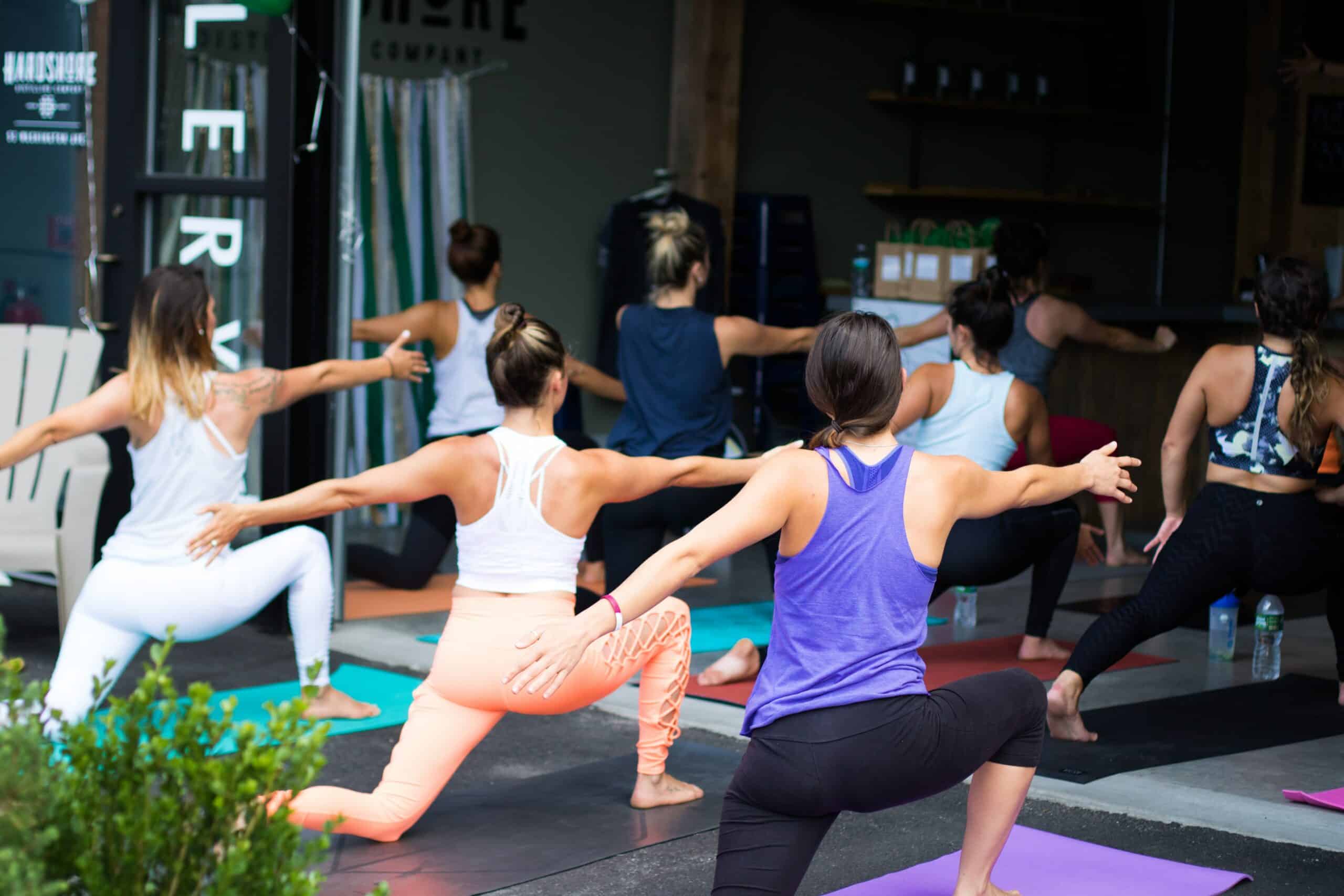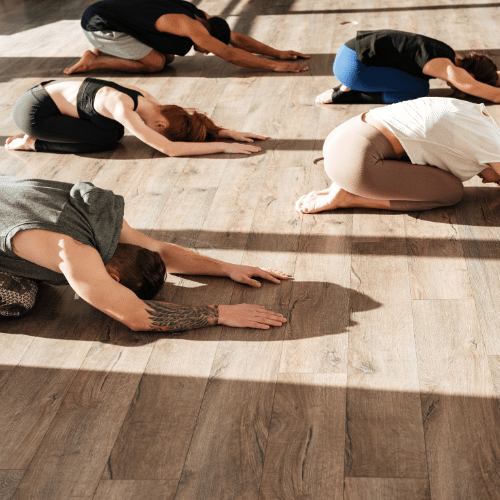Has yoga helped you improve physically, emotionally, mentally, and even spiritually? If you’re a fan of both yoga and helping other people, then you might consider becoming a yoga instructor. Below we discuss how to become a yoga instructor, the benefits of becoming a yoga instructor, how long it takes to become one, and more. So, keep reading.
Why You Should Become a Yoga Instructor
If you want others to benefit from the art of yoga and how it leaves a positive impact on your life, becoming a yoga instructor can be truly rewarding. As a yoga teacher, you need to be familiar enough with the anatomy of movement and the various intricacies of yoga postures.
However, apart from teaching students proper postures, you should offer them a safe and warm environment where they will feel inspired to live a more mindful life. You’re helping them become stronger and healthier. By practicing as a yoga instructor, you’re empowering other people.
Another main benefit of becoming a yoga instructor is meeting new people. You can connect with like-minded individuals from whom you can learn new things. You’ll get the right amount of support you need to become a yoga instructor. Moreover, building connections with other yoga teachers can give you more career opportunities. These include teaching jobs and learning about other enriching workshops and events.
By being a yoga instructor, you can also enhance your own yoga practice. You may be the one teaching your students, but you’re also teaching yourself. Practicing every day and continuously working on yourself are part of the yoga teacher’s ethic. You may also gain a new perspective from them as they try new poses or share their own stories about how yoga transforms their lives.
One of the best things about being a yoga instructor is you’re earning money while doing what you love. You’re sure to excel personally as well, given that your passion becomes your profession.
Steps To Becoming a Yoga Instructor
Want to start your journey to becoming a yoga instructor? Choose your yoga style first. Various forms and styles include Hot Yoga, Hatha Yoga, Gentle Yoga, Power Yoga, Vinyasa Yoga, Sivananda Ashtanga, Bikram Yoga, and Yin Yoga. Apart from finding out which style resonates with you, see if it suits the community where you plan to teach. For instance, Vinyasa Yoga is perfect for a more urban setting full of young people, while Gentle Yoga is good for a retirement community.
While certification isn’t necessary for you to start teaching yoga, it will help you land a job and maintain a competitive advantage. Several studios will also look for at least a 200-hour registered yoga teacher (RYT).
With the RYT 200 program, you’ll learn about the foundations of teaching and practicing yoga. The course materials will include everything about yoga postures and forms, human anatomy, the history of yoga, and structuring classes and teaching poses. You’ll also learn more about the ethics involved in the business of yoga.
The topics may differ per school, but the RYT 200 program is meant to equip you to instruct yoga enthusiasts and help them learn the rituals and practices of yoga. For the certification, you’ll need to pay a $50 application fee to the non-profit organization, Yoga Alliance. Then, choose a trusted yoga school to attend, like Zuda with over 20 years of experience and more than 500 graduates.
To maintain your certification, you must pay a $65 annual membership fee. You may also want to get CPR certification. Although this isn’t mandatory, you’ll often need it, especially if you apply at health facilities.
Other Designations for Yoga Instructors
RYT 200 is the most common designation for yoga instructors. It doesn’t have a teaching hour requirement. You’ll only need to complete 200 hours of yoga teacher training from the same yoga school. Once you’ve earned the RYT 200 certification, you can join a 300-hour RYT program, so you can earn the designation of RYT 500. Finishing RYT 500 means you have learned more complex techniques and gained a higher level of mastery.
You can also acquire an additional designation which is the E-RYT 200, or experienced registered yoga teacher. This means that you finished a 200-hour training with an RY and have had over 1,000 hours of teaching experience after completing training. Moreover, you will have taught for at least two years after training.
You can also aim for the E-RYT 500 designation. This signifies that you finished a 500-hour training and have over 2,000 hours of teaching experience after completing training. Then, you should have taught at least four years after training.
You can gain specialty credentials as well, such as RCYT, or registered children’s yoga teacher, and RPYT, or registered prenatal yoga teacher. Requirements for RCYT include completing a 95-hour children’s yoga teacher training and a 200-hour yoga teacher training.
Meanwhile, RPYT requirements include finishing an 85-hour prenatal yoga program and a 200-hour yoga teacher training. Yoga Alliance approves RYT 200, RYT 500, E-RYT 200, E-RYT 500, RCYT, and RPYT certifications.
Expectations and Opportunities
Apart from knowing how to become a yoga instructor, you may also have other questions regarding the path you’re taking. These include how long it will take to be a yoga instructor and what the work environment will be for you. First, it depends on the training program that you choose and your prior experience.
Before getting a training course, you’re expected to have several years of experience practicing yoga. Then, you choose between a 200-hour and 500-hour certification program. The former usually takes three to five months to finish, while the latter may take six months to one year.
When it comes to the work environment, you can choose from local yoga studios, health and fitness centers, and other related facilities. You can also teach online. Your shift differs according to the number of classes you schedule and the studio or center where you work. Options include days, nights, holidays, and weekends.
As a yoga instructor, you can also choose to work part-time or full-time. You can also be self-employed. Given the nature of work, yoga instructors enjoy higher flexibility while working in a calming environment.
According to the U.S. Bureau of Labor Statistics, yoga instructors belong to the field of fitness instructors and trainers. From 2018 to 2028, a 13% job growth rate is expected. Compared to the growth rate of other occupations, this is significantly higher. There’s job stability and ample career opportunities waiting for you. Thus, you can easily grow personally and professionally as a yoga instructor.
Final Thoughts
Learning how to become a yoga instructor promotes not only personal and career growth but also allows you to help improve people’s lives with yoga. Whether you choose the RYT 200 program or other more advanced designations, several opportunities are waiting for you and your future students. Start your journey to becoming a yoga instructor with us today









